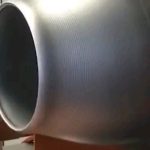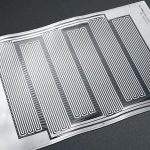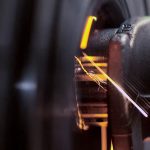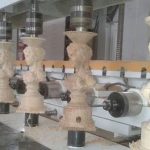With the continuous development of medical technology and people’s increased attention to health, medical analytical instruments play an increasingly important role in clinical diagnosis and treatment. As a core component of medical equipment, the precision manufacturing of sheet metal parts for medical analytical instruments is crucial to ensuring the stability, reliability and accuracy of the instrument.
In recent years, China Sheet Metal fabrication has made significant progress in the field of sheet metal parts for medical analytical instruments, making positive contributions to the advancement of medical diagnostic technology. Medical analytical instrument sheet metal parts refer to sheet metal products used for medical analytical instrument shells, panels, brackets and other components. They are usually made of high-strength, corrosion-resistant metal materials, such as stainless steel, aluminum alloy, etc. These sheet metal parts require precise cutting, bending, stamping, welding and other processes to ensure their dimensional accuracy and appearance quality. At the same time, the surface treatment of sheet metal parts is also very important. Spraying, electroplating, etc. can be used to improve their durability and aesthetics.
Precision manufacturing of sheet metal ductwork for medical analytical instruments is critical to the accuracy and reliability of medical diagnostic technology. For example, the casing of a blood analysis instrument needs to have good sealing and protective properties to ensure accurate testing of samples; the holder of a spectrum analysis instrument needs to have a stable structure and precise position to ensure the normal operation of the optical system. Only precision-manufactured sheet metal parts can meet the needs of medical analysis instruments in various complex environments. In recent years, my country’s medical analytical instrument sheet metal parts manufacturing technology has made significant progress. On the one hand, we have introduced advanced processing equipment and technology, such as metal signs laser cut machines, laser welding machines, etc., to improve production efficiency and processing accuracy. On the other hand, we focus on talent training and technological innovation, cultivate a group of technical personnel with rich experience and professional knowledge, and promote the development of sheet metal parts manufacturing technology for medical analysis instruments.
The precision manufacturing of sheet metal parts for medical analysis instruments not only improves the accuracy and reliability of medical diagnostic technology, but also provides doctors with more diagnostic methods and treatment options. For example, medical instruments based on spectral analysis can quickly diagnose whether a patient has a certain disease by detecting specific spectral signals in samples; medical instruments based on electrochemical analysis can detect biomarkers in blood to help doctors evaluate patients’ symptoms. Health status. These advanced medical analytical instruments play an important role in improving the accuracy of disease diagnosis and the efficiency of early screening. The manufacturing of sheet metal parts for medical analytical instruments still faces some challenges.
For example, high processing accuracy and complex processes require the investment of a large amount of manpower and material resources; material selection and surface treatment have an important impact on product quality and require continuous optimization and improvement. Therefore, strengthening technology research and development, promoting standardization and standardization construction, and cultivating more professional talents are the keys to further promoting the development of sheet metal parts manufacturing technology for medical analytical instruments. The precision manufacturing of sheet metal for medical analytical instruments provides solid support for the advancement of medical diagnostic technology. Our country’s achievements in the field of sheet metal parts manufacturing for medical analytical instruments are encouraging. We look forward to more scientists, engineers and enterprises working together to promote the innovation and development of sheet metal parts manufacturing technology for medical analytical instruments and provide a basis for the development of medical diagnostic technology. Make greater contributions to progress.






